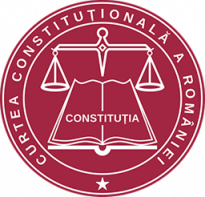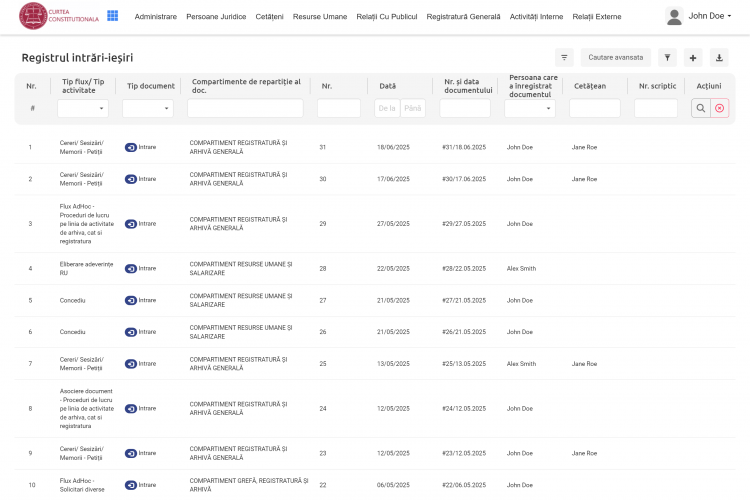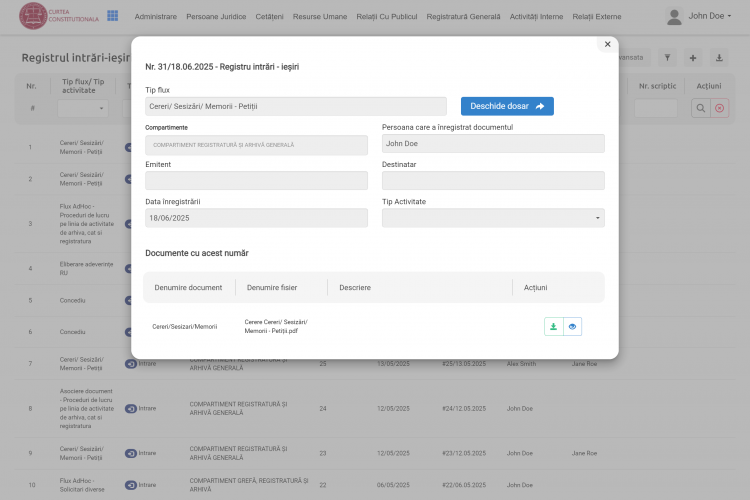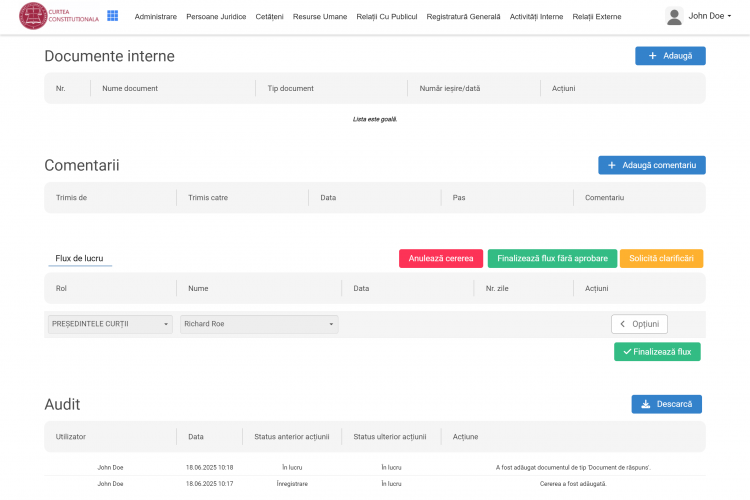Digital Case Management System for the Constitutional Court of Romania
Implementation of a National-Level Digital Case Management System for Constitutional Proceedings
This project was implemented for the Constitutional Court of Romania, the nation’s Supreme Court in the public legal sector. Tasked with overseeing complex constitutional cases, the Court needed a modern digital platform to improve efficiency, transparency, and control across all case management operations.
Initial Challenges
Prior to implementation, the Constitutional Court relied on fragmented systems and manual processes to handle legal documentation, deadlines, and procedural workflows. This paper-based, departmentally inconsistent approach resulted in critical inefficiencies, delays, and limited visibility into case status. The Court was managing a high volume of sensitive legal documents without a centralized platform, which increased the risk of procedural errors and compliance failures.
Key operational difficulties included:
- Inconsistent workflows and lack of standardization across departments
- Difficulty tracking thousands of case-related documents and legal stages
- Limited transparency regarding status updates and case outcomes
- Manual reporting and high risk of missed deadlines or regulatory breaches
- No unified system for managing the full case lifecycle from intake to closure
These challenges impacted legal accuracy, institutional credibility, and the Court’s ability to deliver timely justice at a national level.
The Smart Solution
To overcome these issues, the Court implemented an integrated Legal Case Management System tailored to public judicial processes. The digital platform centralized case documentation, deadlines, communication, and procedural workflows into a single environment. Automation was introduced to standardize task assignments and trigger alerts for key deadlines. Real-time dashboards gave administrators full visibility into ongoing proceedings, while reporting tools provided up-to-date insights for both operational oversight and legal compliance. The solution ensured that every case followed a uniform, trackable process while offering the flexibility needed for specialized constitutional cases.
Implementation Insights
The transition involved multiple phases including stakeholder alignment, platform customization, and secure integration with legacy systems. An initial analysis phase mapped existing workflows to identify bottlenecks and process gaps. Design and prototyping sessions followed, involving both legal and administrative staff to ensure usability. During development and testing, feedback loops were established to fine-tune automation rules and reporting formats. Training and change management programs supported staff adoption across departments, ensuring that the transition to a digital case management system was both seamless and widely accepted. The final launch marked a shift toward a streamlined and fully traceable process for constitutional case management.
Results & Impact
The digital transformation of case management operations at the Constitutional Court delivered notable improvements across performance, accuracy, and institutional transparency.
Quantitative Results:
- Reduced case processing time due to automated task routing and document handling
- Lowered operational costs by eliminating paper handling and manual coordination
- Increased productivity through real-time case tracking and workflow standardization
Qualitative Results:
- Positive feedback from users on platform clarity and efficiency
- Fast adoption across departments thanks to intuitive design and relevant training
- Greater flexibility in handling complex case types without losing procedural control
- Enhanced institutional transparency and compliance readiness through audit-ready documentation
Together, these outcomes contributed to a more agile and responsive justice system capable of managing constitutional matters with higher precision and accountability.
Lessons Learned & Key Takeaways
The project revealed several strategic lessons for large-scale digital implementations in the public legal sector. Engaging legal and administrative stakeholders early helped define practical, usable workflows. Mapping existing processes before automation proved essential to minimizing disruption. Structured onboarding, paired with clear communication, accelerated adoption and improved trust in the system. The ability to adapt platform functionalities to constitutional case specifics was a major success factor. Ultimately, this initiative demonstrated that technology can enable courts to deliver faster, more transparent justice while strengthening compliance and public trust.






